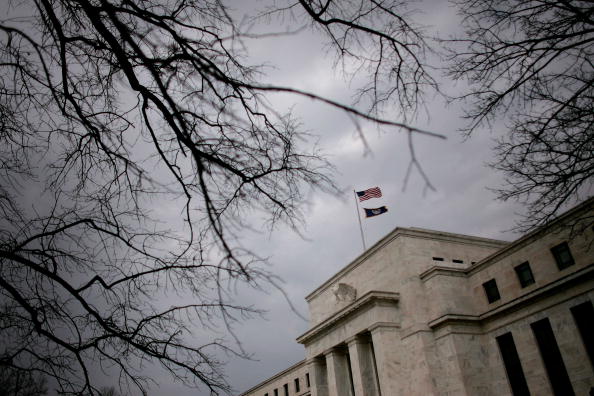(Bloomberg Opinion) -- By one measure, the yield curve inverted on Monday: The interest rate on five-year Treasury bonds slipped below the rate on three-year bonds. That’s a worrying sign because rates on longer-term bonds are typically higher than those on shorter-term bonds, and such inversions are associated with recessions.
So far, however, I would consider the yield curve only “partially” inverted. A full inversion would be when interest rates on two-year Treasury bonds rise higher than rates on 10-year bonds. In the last 40 years, each time this has happened, the U.S. economy has entered a recession soon afterwards.
This makes an inverted yield curve the most reliable indicator macroeconomists have for predicting a recession. The last two times the yield curve inverted, in 1998 and 2008, the debate among economists was whether this time would be different. In both cases, it wasn't.
As I write, the interest rate on two-year Treasury bonds is just above 2.8 percent while 10-year Treasury bonds are just below 3 percent. This is the closest they have been since the Great Recession ended. Does that mean that the U.S. is on the verge of recession?
My answer: yes, probably. But, as with so much else, a lot depends on how the Federal Reserve reacts.
When it meets next week, the Fed is widely expected to raise its target interest rate again, to 2.5 percent. This rate, known as the federal funds rate, is the shortest term interest rate in the economy. It’s the rate banks charge each other for loans that last from the close of one business day to the opening of the next. These loans help ensure that banks have enough funds available to process any payments authorized the previous day.
Raising this rate puts pressure on other short-term interest rates. December’s increase is largely already priced into the interest rate on two-year Treasury bonds, so it alone won’t be enough to push the economy into recession. What really matters is how the Fed responds to the yield curve and other key macroeconomic data over the next few months.
While almost all economists agree that a yield curve inversion signals a coming recession, they are divided on why. The mainstream view is that the yield curve inverts because the markets expect the Fed to cut interest rates once the economy starts to slow down. Traders want to lock in relatively high rates now so that they will be protected from future declines. This makes sense: Investors wouldn’t purchase 10-year bonds that paid a lower interest than two-year bonds if those same investors thought interest rates were likely to rise.
Still, this explanation raises a deeper question. If the yield curve is inverting because bond traders believe that the Fed will lower rates in the future to fight an imminent recession, then why doesn’t the Fed simply lower interest rates now and avoid the recession altogether?
The answer, I think, is that the inverted yield curve indicates that the Fed’s current policy has already begun to cause a recession. An inverted yield curve is telling us that short-term rates have risen above the long-run natural rate of interest and that, one way or another, short-term interest rates are going to have to fall. And they will fall either because the Fed recognizes its mistake and lowers them in time to avoid a recession, or they will fall because the Fed fails to see its mistake and leads the economy into recession.
Central to this view is the realization that it is difficult for long-term interest rates to drift very far from the long-term natural rate of interest. Suppose, for example, that over the next month or so the yield curve fully inverts, yet the Fed continues with its plan to hike interest rates. Not only would economic activity begin to slow, but inflation pressures would fall. And when inflation falls, as Irving Fisher explained, inflation-adjusted interest rates rise.
The combination of less activity and higher rates makes debt service more difficult, raising the risk of default. In response, investors would sell stocks and buy Treasury bonds. Thus interest rates on those bonds would fall even as conditions in the rest of the economy got worse.
The economy faced just this scenario in 2000, when interest rates on 10-year Treasury bonds continued to fall even as the Fed was raising rates:
By the time the Fed began cutting rates in December 2000, it was too late. The economy entered a recession in March 2001.
In 2000, the Fed overestimated the strength of the economy, and starting in 2001 it was forced to make deep rate cuts to make up for lost time. I fear it is making a similar mistake today. The underlying economy is fairly strong, but not as strong as the Fed thinks.
